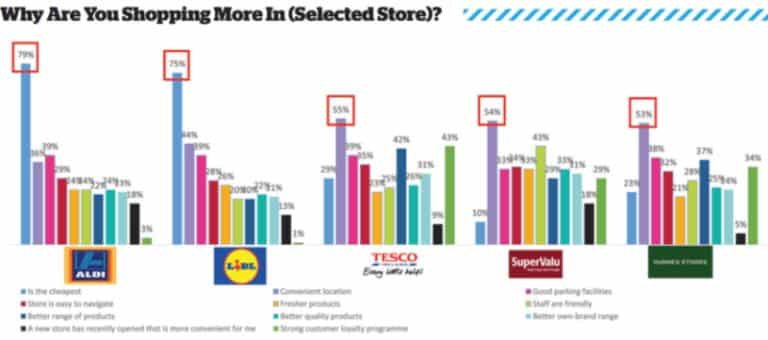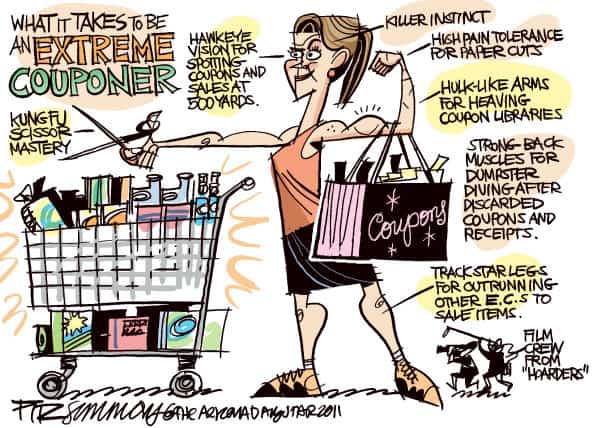How important is store location in grocery retailing?
- June 7, 2016

We’ve all heard the familiar aphorism “location location location” for emphasising the importance of this factor in real estate, but how important is it in determining the success or otherwise of a retail investment?
I have been analysing retail networks for over 20 years and what I’ve learned is that location is indeed the single most important factor but its relative importance is determined by the type of store. Retail analysts should always think about the shopper first and how they behave. Most shoppers are fairly predictable. They will travel in the line of least resistance and only break that rule if compelled to by other factors.

In simple terms, a shopper will go to their nearest shop unless less convenient shopping opportunities are more attractive and the extra distance is rewarded sufficiently by the shopping experience (cost, range, environment etc.) All of this can be modelled and predicted and we get it fairly right most of the time. Different retailer types have different trade area extents, so one may not be happy to go to the nearest antique shop always but very happy to go to the nearest convenience store. It depends on the frequency of purchase, the value of goods, the relative distance between stores and the perceived level of similarity between goods in different stores.
Grocery shopping in particular is an activity where the consumer behaves quite logically in both convenience shopping and in supermarket (destination) shopping. Mr Shopper will go to his nearest convenience store or possibly second nearest (if it’s much nicer) but won’t generally pass four or five to get to one that’s “just right”. For supermarkets, he will travel further but again will most likely go to one of his four or five closest supermarkets, his patronage being determined by the trade-off between the pain of travel and the rewards of store attractiveness (value, quality, environment, parking etc.).
By using spatial analysis methods such as IO trading area definition and retail gravity modelling, and through calibrating the results from loyalty card data, we can assess the importance of location and the results are pretty clear. Along with value (being the cheapest), store location in grocery shopping is THE most important factor in determining the success of a grocery store.
The “Where We Shop” survey carried out by Ignite Research on Irish Grocery Shoppers in July 2015 seems to support this assertion. Basically, it reveals that if you are not one of the discounter grocery retailers, your store locations are the most important factor in your success as a brand.

So if this is the case, what does it tell us about defining a logical growth strategy for grocery retailing? It’s quite clear. If you aren’t going to be the cheapest in the market then you’d better be the first to identify and acquire those locations that will give you a strategic edge. And you’d better react when a competitor acquires a good location.
It is preferable to pursue an intelligent location strategy vis-a-vis your competitors rather than to solely invest in branding, couponing and advertising because convenience matters more to the consumer. However, the optimum approach is to use both strategies using location intelligence to filter your choice
of coupon receipient and reward those likely to become regular shoppers based on their proximity. Get the high ground and the rewards will follow (as pointed out by the great retail analyst Sun Tzu in 5th Century B.C.) Lose it and your market share will suffer.

Advertising, couponing and promotions will all offer boosts to store revenue. But a badly-located store will need to pursue this strategy for the entirety of its existence. And often when the incentives cease, the floating customer will revert to what is most convenient or cheapest or both. A well placed store has a lifetime of cheaper customer retention and acquisition costs to enjoy. So, isn’t it best in the long run to invest in “location, location location “?
@ 2016 Gamma.ie by Feargal O’Neill
About Storecast™
Gamma’s Storecast™ is a new concept in end-to-end store location analytics and reporting. From identifying suitable locations for new store openings and refurbishments to driving business to existing stores, Storecast™ offers the retailer an enterprise solution to ensure success and efficiency for their chain. Storecast™ combines world-class revenue-forecasting models, powerful mapping and graphics with an extremely powerful location intelligence platform to deliver unparalleled functionality, including site profiles for business case reporting and sales predictions based on market potential. Delivered as a SaaS solution or on-premise, Storecast™ offers a flexible and powerful enterprise solution for managing and growing your retail network.

